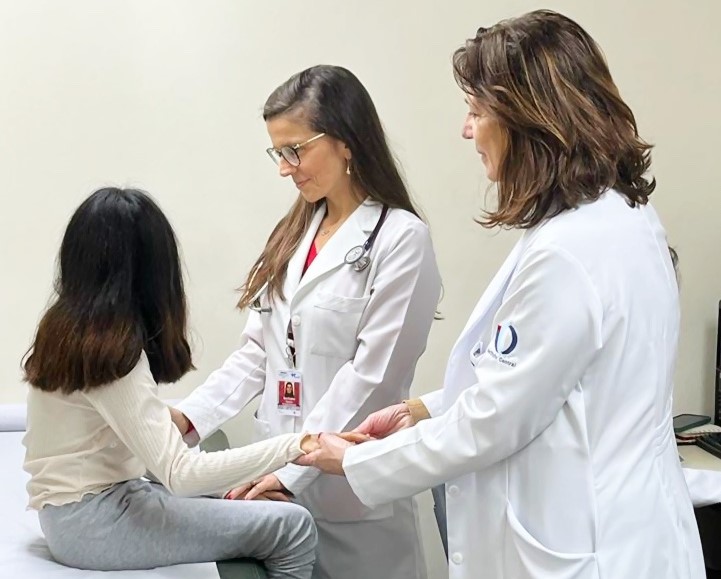


Physicians Ana Canton and Ana Cláudia Latronico on duty at the Outpatient Clinic for Pubertal Disorders, Hospital das Clínicas, FM-USP (photo: personal archive)
Published on 09/18/2023
By Julia Moióli | Agência FAPESP – Central precocious puberty (CPP) is a rare disorder but has become more frequent in recent decades throughout the world, owing to both environmental factors, such as exposure to chemical compounds that affect the endocrine system (e.g. bisphenol A, phytoestrogen, phthalates and mercury), and improvements in diagnosis and access to treatment.
The problem can be explained as premature activation of the “biological clock” due to early secretion of gonadotropin-releasing hormone (GnRH). Gonadotropin is a natural hormone that regulates ovarian and testicular function and is essential for normal growth. CPP can be treated with GnRH agonists, which bind to the receptors concerned and block their action. One of the few populational studies on CPP, conducted in Denmark in 2005, calculated an incidence rate of 5 cases per 10,000 boys and 20-23 per 10,000 girls.
A genetic cause of CPP has been discovered by researchers at the University of São Paulo’s Medical School (FM-USP) in Brazil and collaborators in four other countries (France, Spain, the United Kingdom and the United States), as reported in an article published in The Lancet Diabetes & Endocrinology.
The authors describe the presence of mutations in the gene MECP2, which encodes a protein of key importance to neuron development, in children with CPP and with or without neurological abnormalities considered mild, such as autism or microcephaly. This kind of genetic alteration had previously been observed only in people with Rett syndrome, a severe neurological disturbance that causes a progressive loss of motor skills and language.
With FAPESP’s support, the team analyzed a group of 404 children (girls under 8 and boys under 9 with signs of CPP) and found mutations in MECP2 in seven of the girls who had no significant neurocognitive abnormalities or displayed conditions considered mild – very different from Rett syndrome. Furthermore, a study involving mice showed that the gene was clearly expressed in the neurons responsible for producing GnRH in the hypothalamus and regulating the onset of puberty.
Genetic counseling and novel treatments
“About 75% of CPP cases are considered sporadic – not familial – and have no known genetic cause,” said Ana Pinheiro Machado Canton, first author of the article and a researcher at FM-USP. “The study therefore provides evidence for an additional causal factor that needs to be analyzed in greater depth. Genetic counseling is also required in such cases, alongside careful monitoring of metabolic, psychological and reproductive development for the benefit of the children concerned and their families.”
The findings are also important for their potential contribution to the development of novel therapeutic approaches. “Although treatment exists right now and is highly effective, whenever we detect factors of this magnitude we also open another research gateway,” she said. The group plans to evaluate more patients in order to investigate the mechanisms whereby the protein MECP2 regulates the onset of puberty, for example.
The study was conducted in partnership with researchers at Queen Mary University of London, Oxford University, Imperial College London and Cambridge University in the UK; Harvard Medical School in the US; Paris University in France; and the Autonomous University of Madrid, the University of Seville and Virgin of Arrixaca University Hospital in Spain.
The article “Rare variants in the MECP2 gene in girls with central precocious puberty: a translational cohort study” is at: www.thelancet.com/journals/landia/article/PIIS2213-8587(23)00131-6/fulltext.
Source: https://agencia.fapesp.br/44878